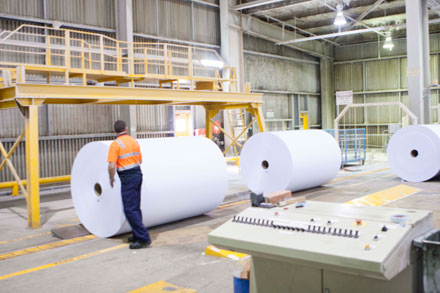With a significant portion of Australian and New Zealand supply coming from European sources and companies, what happens in Europe last month, impacts Australasian price and volume developments in coming months. Sources: EMGE, IndustryEdge
Global paper market consultants EMGE & Co report on the latest news in the European printing and communication paper market with this written by Iwan le Moine, EMGE’s managing director.
We have just seen European March statistics and they are certainly showing a tighter situation – demand is improved but mainly because it started to fall off a cliff in the last week of March 2020 he said.
“In the UK, it very much feels like Palm are treating customers on an allocation basis with
restricted supplies. On the continent, I have heard the same for Perlen. Langebrugge appears to be taking an extended shut for 3 weeks, and something similar at Sachsen for 2 weeks. These two mill-shuts alone would take out something like 28,000 tonnes. Throw into the mix increased usage this week in the UK for the Royal Funeral … its busy out there.”
PaperNewsprint prices in Europe are historically low, so if mills correct this for whatever reason, it will help them restore some of them back into the black, as well as being in line with rising global fibre costs and paper prices.
Some major mills have now formally asked European buyers for +€75/t (£65/t) for Newsprint and +€60/t (£55/t) for SC/LWC Magazine & Woodfree Papers. That’s what they want (and will say they need to counter rising recovered paper/pulp and transportation/energy costs.
Paper prices will rise, but most risks remain on the downside for paper demand, as it remains fragile at best, and uncertain. EMGE’s view is that fibre costs will soon peak or may already have done so.
Mills have a small window of opportunity to push for price increases while buyers start to panic, stocks drop, and they watch the transition from Covid growth to post-Covid (normal vs 2020-Covid growth). Paper mills can restrict supply for a few weeks now to help push that agenda. When demand returns to “normal” and supply is shown to continue to be too high, operating rates will fall back later this year, unless more capacity is removed permanently.
It is still a far from ideal demand-supply situation, but with a much stronger individual month in March, ongoing container/lead time issues (notwithstanding the Suez clearance), increased European newsprint exports (Q1: +10%), fewer and larger suppliers have stronger control over shipments, delivery times and ultimately, prices.
The end of lockdown in the UK will help, though it’s back to partial Lockdown v3 elsewhere in Europe (France, Germany, etc). In the UK, we can see some economic bounce back already, hopefully supported by a high anti-Covid jab rate. This reprieve remains fragile – and geographically patchy; millions are expected back in the streets and on the beaches across the UK and beyond, as retail and freedom of movement returns.
Another virus/lockdown set-back now would be certainly even more catastrophic.
Back in the paper world, operating rates provide clear evidence that there is still too much paper around (even if some sub-sectors are tight on a single month basis), but it’s heading the right way for mills, just at the right time of the year (in Europe) when negotiations for 2H are heating up.
It also seems the Russo-Malaysian Inter- liner/‘brown newsprint’ strategy is starting to take in Europe too, as at least one big European mill is now following suit.
Certainly, in the UK, where the busier spring, combined with lifting of lockdown measures alongside the Royal funeral, could well see demand improve during a period of international (commodity and paper) price rises, recovered paper shortages, delivery delays and cost issues, as well as clever mill supply management, to enable upward 2H price corrections across Europe.
Our view is that global market pulp prices will correct down soon, and wastepaper prices will hit a ceiling too – and even drop as supply eases with better paper consumption – but the writing now seems firmly on the wall for a 2H price increase. Things are changing all the time, but where I was on the “no change” fence a few weeks ago, I’d now say the momentum has swung and we should expect at least +GB£25-30/t in 2H.
If mills achieve this, we think they will start to be in a better situation. The mood has certainly changed very fast in the marketplace over the past 2-3 weeks and buyers
have moved from being relatively confident (of stable prices at worst), if still a little confused, to apprehensive about the expected rises.






